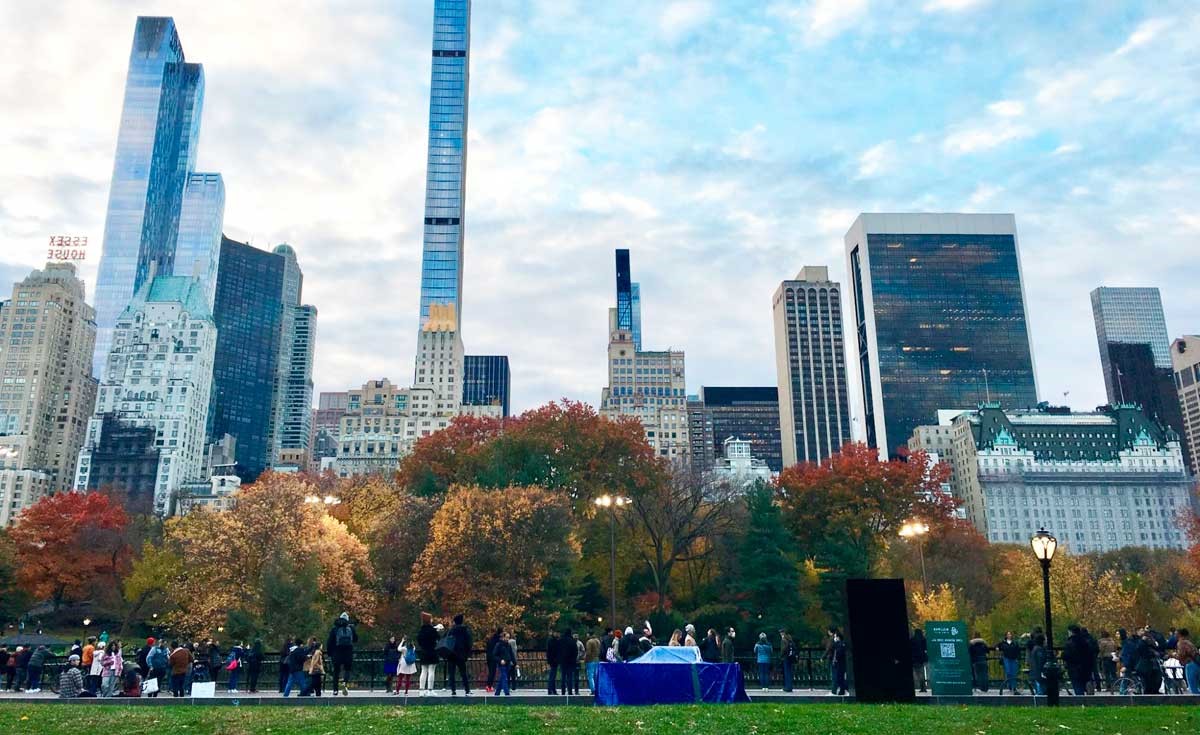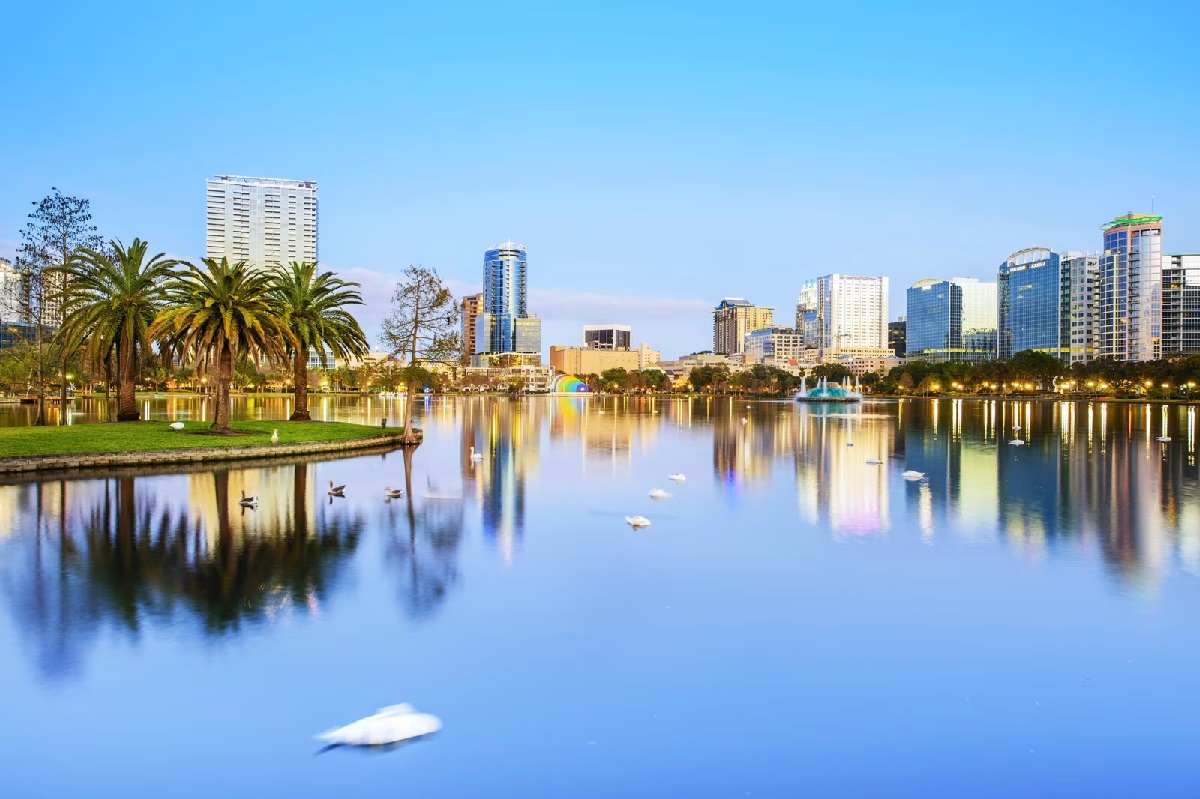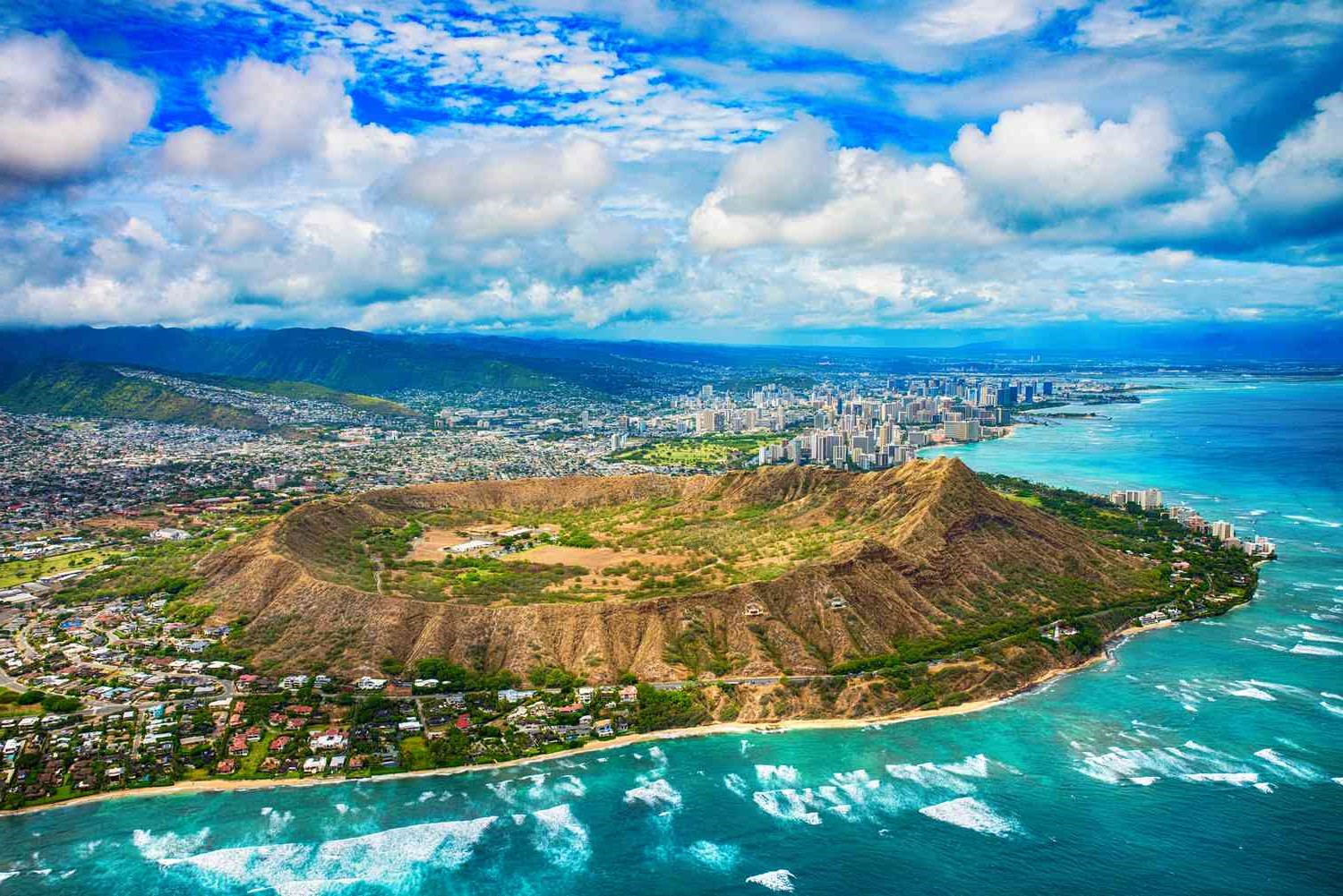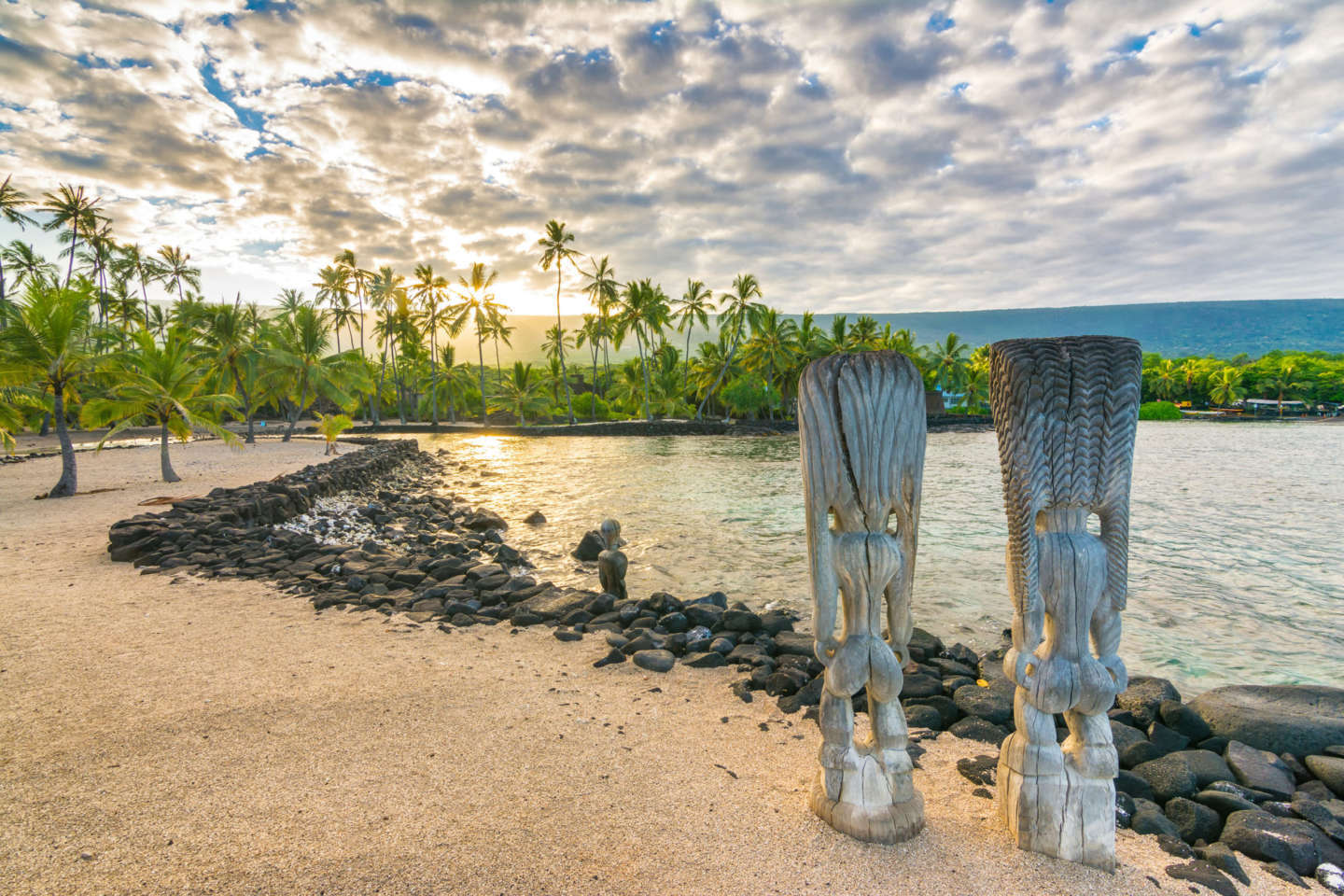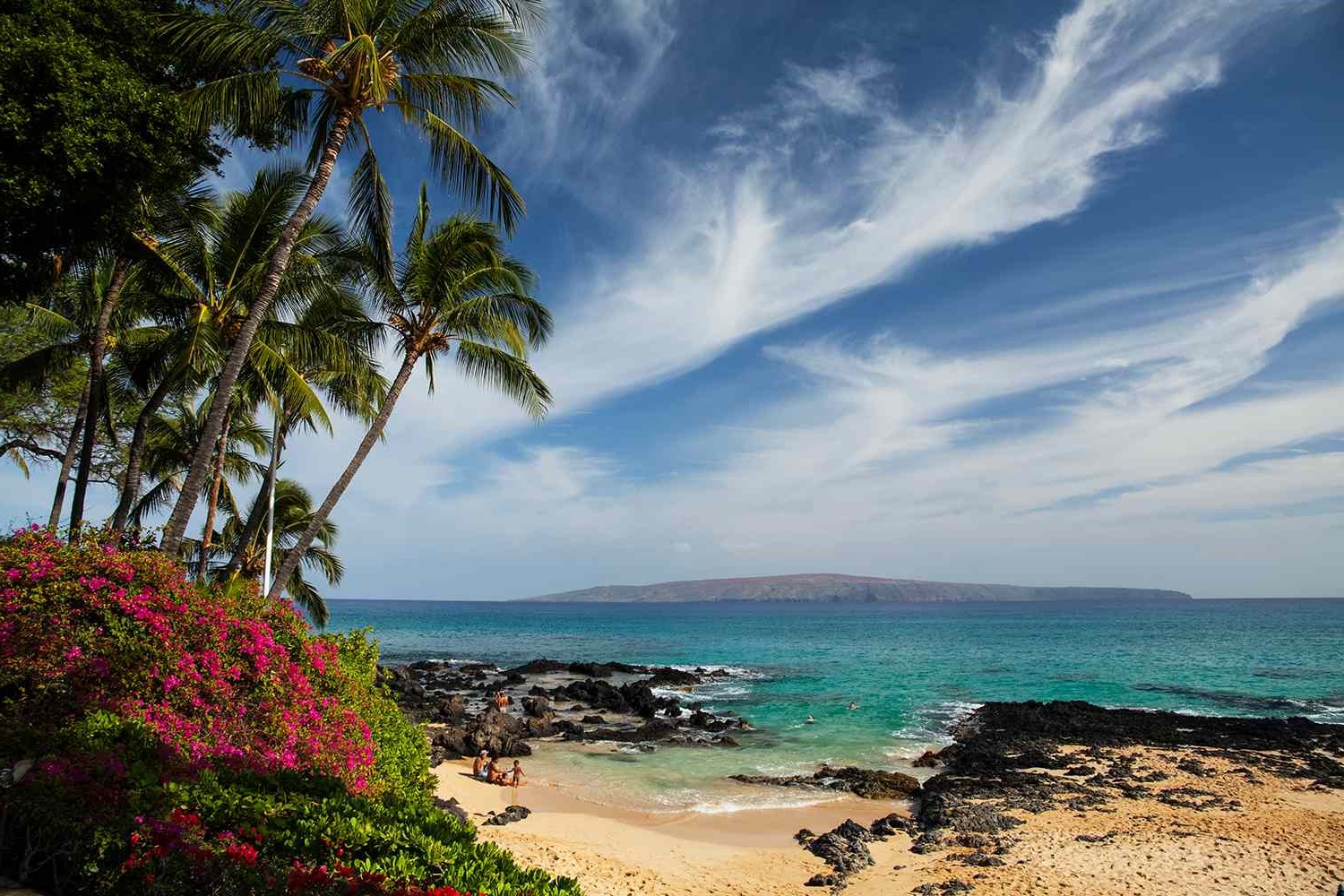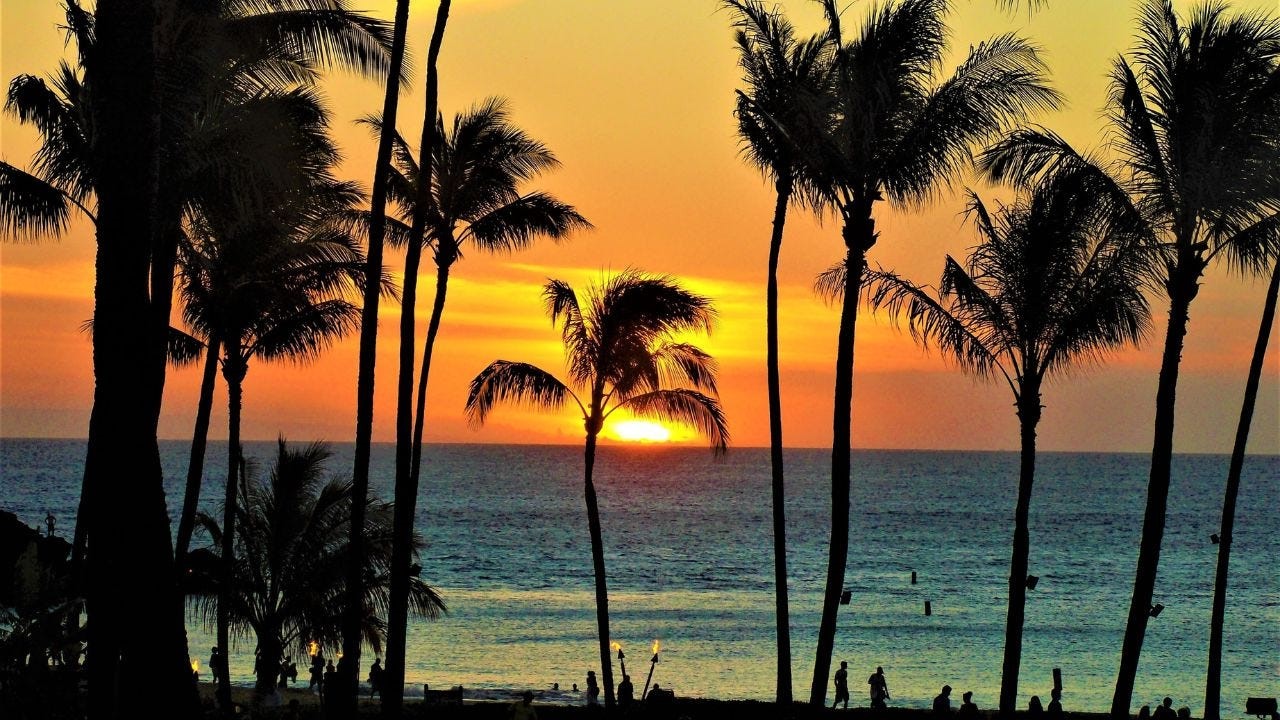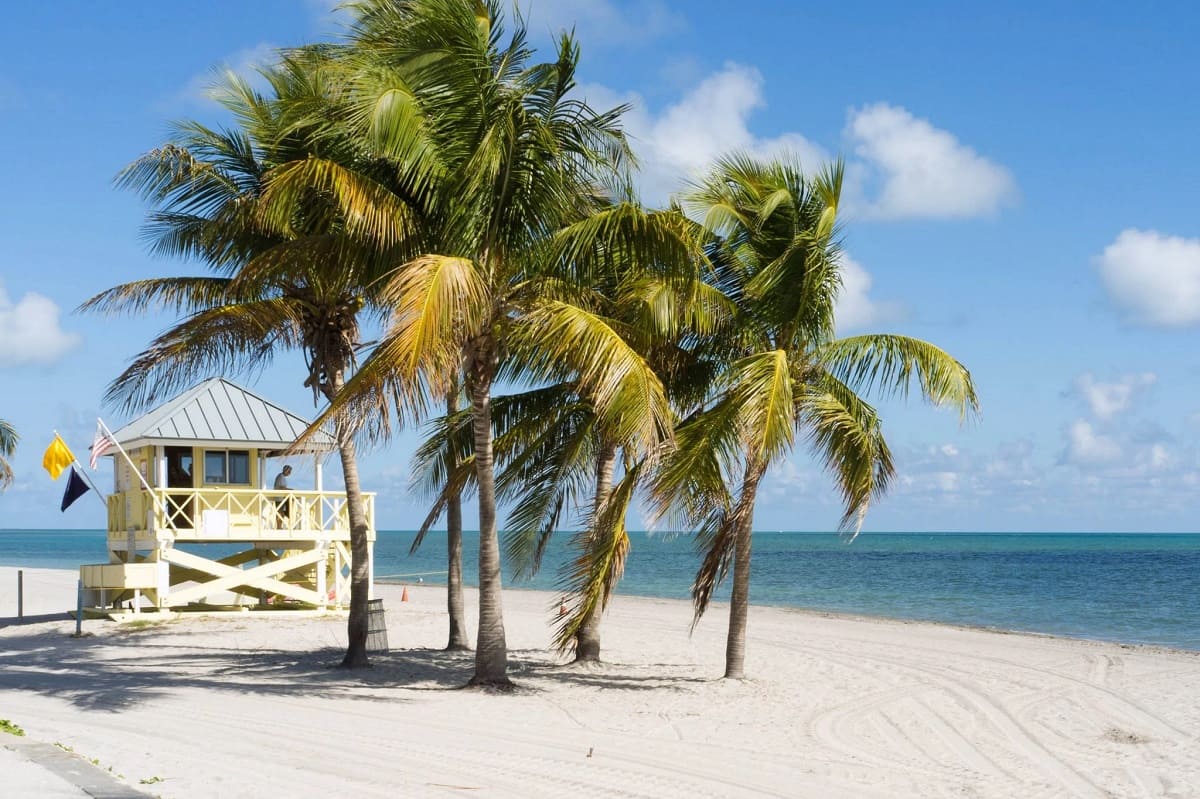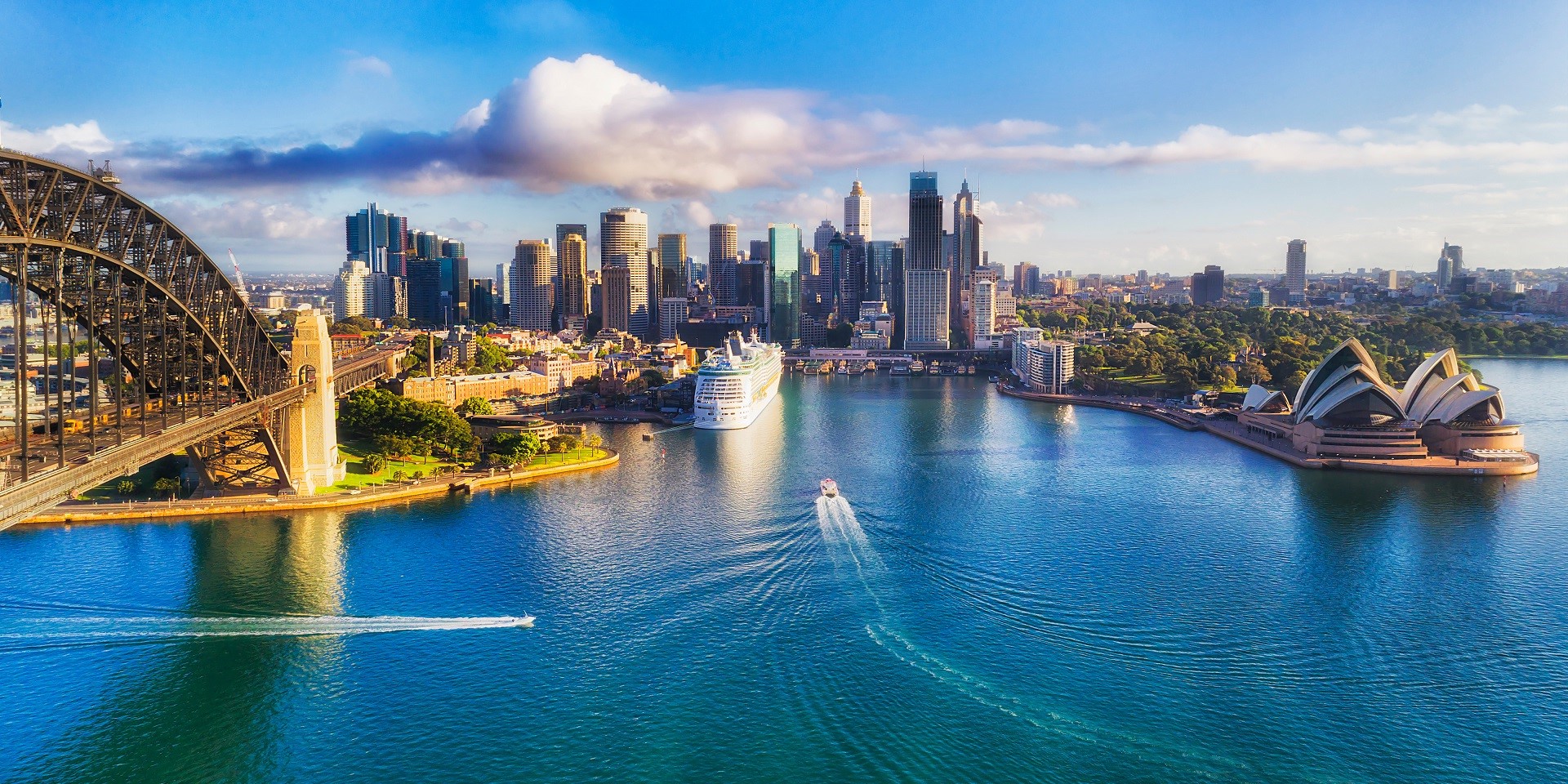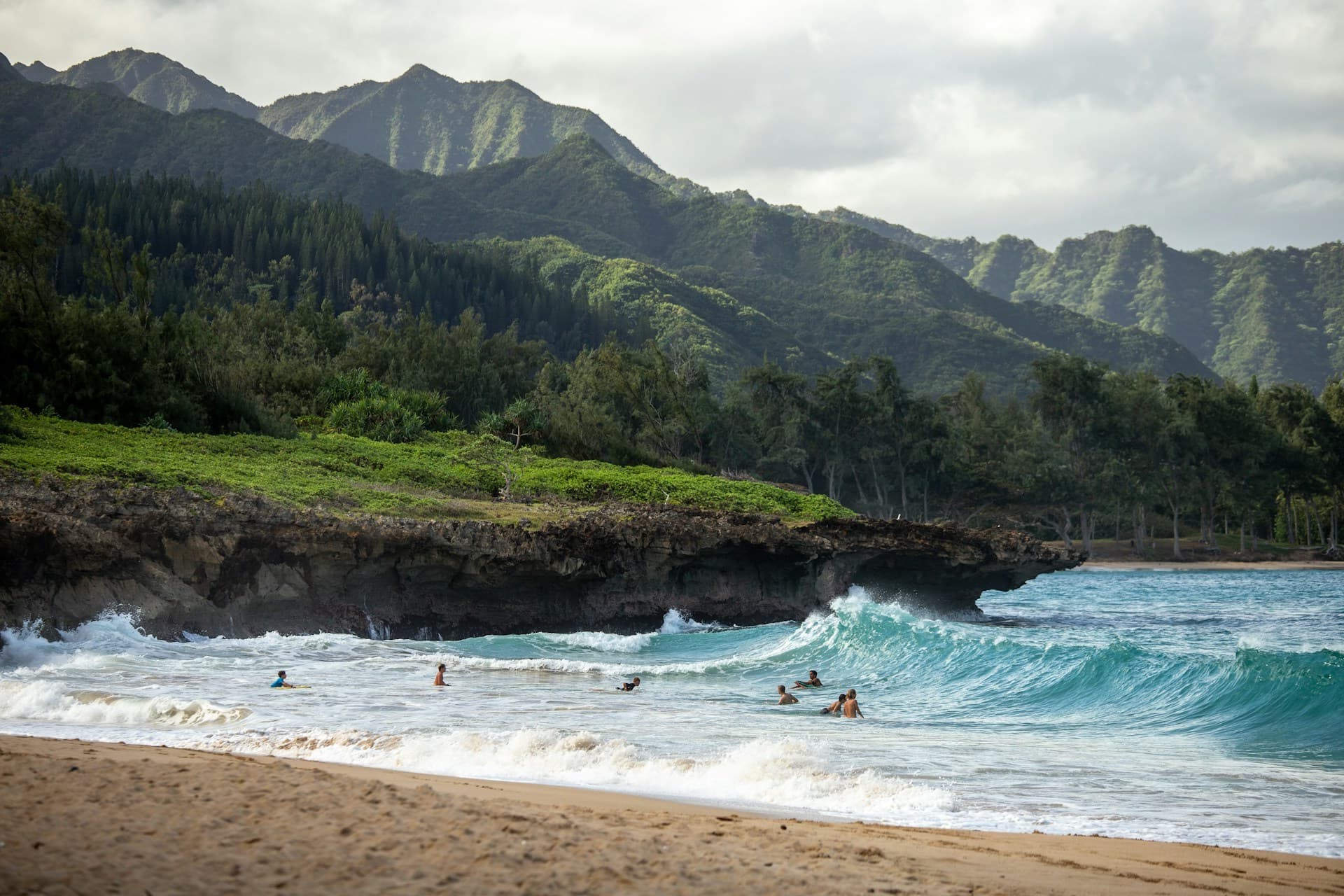Home>Weather and Climate>Kona Weather: A Comprehensive Guide To The Weather In Kona, Hawaii
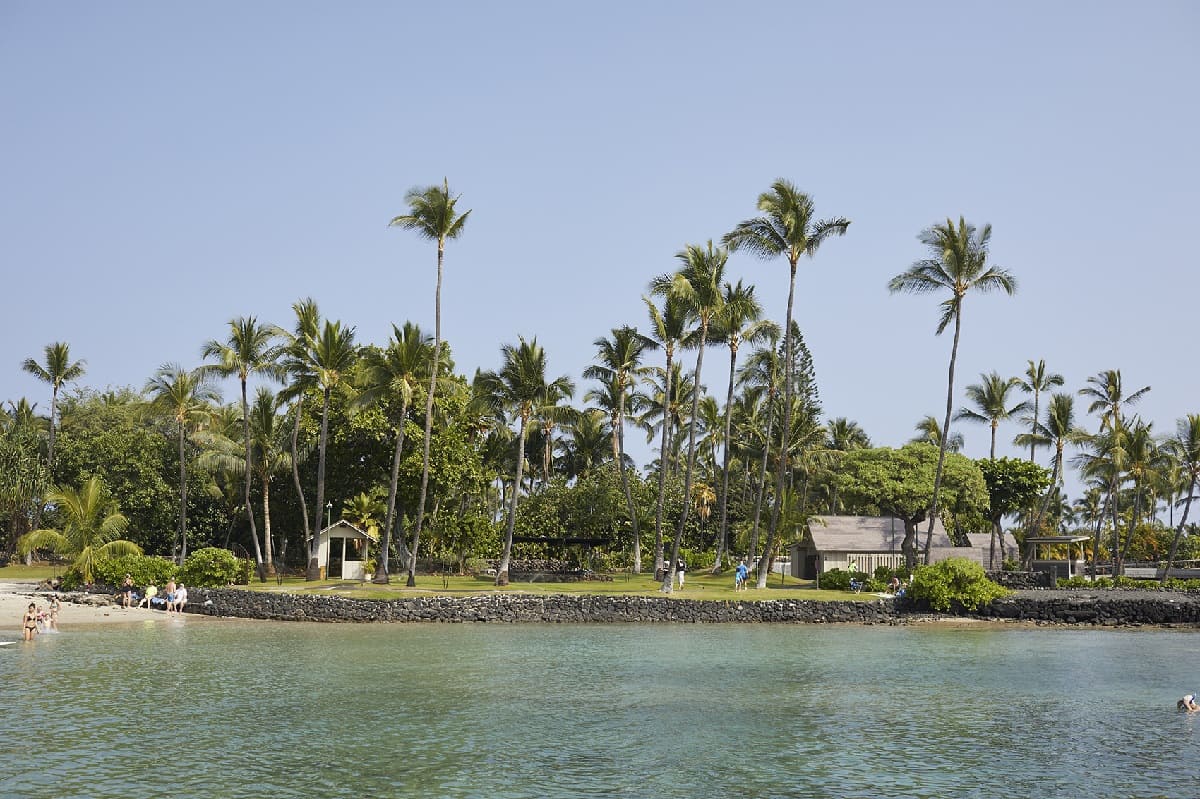

Weather and Climate
Kona Weather: A Comprehensive Guide To The Weather In Kona, Hawaii
Published: March 4, 2024
Discover the latest Kona weather and climate conditions in this comprehensive guide to the weather in Kona, Hawaii. Plan your trip with accurate weather information.
(Many of the links in this article redirect to a specific reviewed product. Your purchase of these products through affiliate links helps to generate commission for Temperatures.com, at no extra cost. Learn more)
Table of Contents
Introduction
Kona, Hawaii, is renowned for its breathtaking landscapes, rich cultural heritage, and unique weather patterns. Nestled on the western coast of the Big Island, Kona boasts a climate that sets it apart from the rest of the Hawaiian Islands. Understanding the weather in Kona is essential for anyone planning a visit, as it significantly impacts outdoor activities, travel plans, and overall experiences on the island.
The weather in Kona is characterized by its distinct microclimates, which can vary dramatically within short distances. From the sun-drenched shores to the lush upland areas, Kona's weather offers a diverse range of conditions that contribute to the region's allure. Whether you're a sun-seeking beach enthusiast, an avid hiker, or a cultural explorer, the weather in Kona plays a pivotal role in shaping your itinerary and experiences.
In this comprehensive guide, we will delve into the nuances of Kona's weather and climate, exploring its seasonal patterns, the impact of weather on outdoor activities, and valuable tips for dressing and packing. Additionally, we will highlight the best times to visit Kona to make the most of its ideal weather conditions. By the end of this guide, you will have a deeper understanding of Kona's weather and be well-equipped to plan an unforgettable trip to this captivating destination.
Read more: Hawaii July Weather Guide: Sun or Rain?
Understanding Kona's Climate
Kona's climate is shaped by its unique geographical features and the influence of trade winds and ocean currents. Situated on the leeward (western) side of the Big Island of Hawaii, Kona experiences a semi-arid climate, characterized by warm, sunny days and minimal rainfall. This distinct climate is attributed to the island's topography, which creates a rain shadow effect, shielding Kona from the moisture-laden trade winds that sweep across the eastern side of the island.
The leeward location of Kona also contributes to its relatively drier and sunnier conditions compared to other parts of the island. The region's microclimates further add to the diversity of weather patterns, with coastal areas basking in the warmth of the sun and higher elevations experiencing cooler temperatures and occasional cloud cover.
One of the defining features of Kona's climate is its consistent warmth throughout the year. Average temperatures typically range from the mid-70s to the low 80s Fahrenheit, providing an inviting environment for outdoor activities and leisurely pursuits. The gentle sea breezes that grace the coastline contribute to the pleasant and temperate conditions, making Kona an appealing destination for travelers seeking a tropical escape.
While Kona's climate is generally characterized by sunshine and warmth, it's important to note that the region does experience variations in weather based on elevation and proximity to the coast. The upland areas, such as the slopes of Mauna Loa and Mauna Kea, exhibit cooler temperatures and a greater likelihood of cloud cover and occasional showers. This diversity in microclimates adds an intriguing dimension to Kona's weather, offering visitors a range of experiences within a relatively small geographic area.
Overall, understanding Kona's climate involves recognizing its semi-arid nature, the influence of trade winds and ocean currents, and the interplay of microclimates that contribute to the region's weather patterns. This understanding forms the foundation for planning activities, packing appropriately, and making the most of the unique climatic conditions that define Kona, Hawaii.
Seasonal Weather Patterns
Kona's seasonal weather patterns offer a captivating insight into the dynamic nature of the region's climate. While Kona enjoys relatively consistent warmth throughout the year, distinct seasonal variations contribute to the overall tapestry of weather experiences on the island.
Winter (December – February)
During the winter months, Kona experiences a delightful blend of warm temperatures and refreshing breezes. Average daytime temperatures range from the mid-70s to low 80s Fahrenheit, creating an inviting environment for outdoor adventures and leisurely beach outings. The winter season also brings occasional light showers, particularly in the upland areas, adding a touch of refreshing moisture to the landscape.
Spring (March – May)
As spring unfolds in Kona, the weather transitions into a phase of renewed vibrancy and warmth. The region experiences longer daylight hours, allowing visitors to bask in the sun-drenched shores and partake in a myriad of outdoor activities. The gentle trade winds contribute to the pleasant conditions, creating an idyllic setting for exploring the natural wonders and cultural treasures that abound in Kona.
Read more: Hawaii February Climate Guide
Summer (June – August)
Summer in Kona is characterized by abundant sunshine and balmy temperatures, making it an ideal time for beach enthusiasts and water sports aficionados. The clear skies and warm waters beckon travelers to indulge in snorkeling, diving, and other aquatic pursuits. While the coastal areas revel in the sun's radiance, the upland regions may experience slightly cooler temperatures and intermittent cloud cover, offering a refreshing contrast to the coastal warmth.
Fall (September – November)
As fall descends upon Kona, the region undergoes a gentle transition marked by pleasant temperatures and a gradual decrease in rainfall. The arrival of fall brings a sense of tranquility to the island, creating an enchanting backdrop for exploring Kona's natural beauty and cultural heritage. Visitors can savor the lingering warmth of the summer months while embracing the subtle shifts in weather that herald the upcoming winter season.
The seasonal weather patterns in Kona offer a captivating spectrum of experiences, each characterized by its own unique charm and allure. Whether it's the sun-kissed days of summer, the refreshing breezes of spring, or the tranquil ambiance of fall, Kona's climate invites travelers to immerse themselves in a tapestry of weather experiences that enrich the island's allure throughout the year.
Effects of Kona's Weather on Outdoor Activities
Kona's weather exerts a profound influence on the spectrum of outdoor activities available to visitors, shaping the experiences and opportunities for adventure across the region. The region's semi-arid climate, characterized by warm temperatures and minimal rainfall, creates an inviting environment for a diverse array of outdoor pursuits. From sun-drenched beach escapades to invigorating hikes through volcanic landscapes, Kona's weather sets the stage for unforgettable adventures.
The sun-drenched shores of Kona beckon beach enthusiasts and water lovers to indulge in a myriad of activities, including snorkeling, swimming, and sunbathing. The warm, clear waters provide an ideal setting for exploring the vibrant marine life that thrives along the coastline, offering captivating opportunities for underwater exploration. Additionally, the gentle sea breezes and abundant sunshine create perfect conditions for beachside relaxation and water sports, making Kona a haven for those seeking coastal escapades.
The region's unique microclimates also play a role in shaping outdoor activities, with higher elevations offering cooler temperatures and occasional cloud cover. This diversity allows for a range of experiences, from leisurely strolls through lush botanical gardens to invigorating hikes along scenic trails. The cooler upland areas provide a refreshing contrast to the coastal warmth, presenting opportunities for nature walks, birdwatching, and exploration of the island's diverse ecosystems.
Kona's weather also influences cultural and sightseeing activities, as the region's sunny days and clear skies create an ideal backdrop for exploring historical sites, cultural landmarks, and scenic vistas. Whether it's visiting ancient Hawaiian temples, embarking on a coffee farm tour, or admiring the panoramic views from elevated vantage points, Kona's weather enhances the allure of cultural and sightseeing excursions, allowing visitors to immerse themselves in the rich tapestry of the island's heritage and natural beauty.
Furthermore, Kona's weather patterns contribute to the appeal of outdoor dining and al fresco experiences, as the region's pleasant temperatures and clear evenings create an inviting ambiance for savoring local cuisine and enjoying sunset views. Whether it's a beachside picnic, a sunset dinner cruise, or a leisurely meal at an oceanfront restaurant, Kona's weather enhances the outdoor dining experience, adding a touch of natural splendor to culinary indulgences.
In essence, Kona's weather profoundly shapes the outdoor activities available to visitors, creating a tapestry of experiences that cater to diverse interests and preferences. Whether it's embracing the coastal warmth, exploring the upland landscapes, delving into cultural discoveries, or savoring outdoor dining, Kona's weather enriches the outdoor adventure, inviting travelers to immerse themselves in the region's natural and cultural treasures.
Tips for Dressing and Packing for Kona's Weather
When preparing for a trip to Kona, it's essential to pack and dress appropriately to ensure comfort and enjoyment amidst the region's unique weather conditions. Here are valuable tips for dressing and packing for Kona's weather:
Read more: Hawaii Monthly Weather Guide
Lightweight and Breathable Clothing
Opt for lightweight and breathable clothing to stay cool and comfortable in Kona's warm and sunny climate. Pack cotton or linen shirts, shorts, sundresses, and breathable fabrics that allow air circulation, helping you stay refreshed during outdoor activities.
Sun Protection Essentials
Given the abundant sunshine in Kona, sun protection is paramount. Pack wide-brimmed hats, sunglasses with UV protection, and high SPF sunscreen to shield yourself from the sun's intense rays. Additionally, lightweight, long-sleeved shirts and pants can offer added protection, especially during extended outdoor excursions.
Footwear for Exploration
Select comfortable and sturdy footwear suitable for exploring Kona's diverse landscapes. Whether you plan to stroll along sandy beaches, hike through volcanic terrain, or wander through botanical gardens, supportive sandals, walking shoes, or hiking sandals are ideal choices for traversing the region's varied terrain.
Swimwear and Beach Essentials
If beach activities are on your itinerary, pack swimwear, beach towels, and water shoes for comfortable seaside adventures. Don't forget to include a beach tote or waterproof bag to carry essentials, such as sunscreen, water bottles, and snacks, for a day of seaside relaxation and water sports.
Read more: How Kona Weather Changes Month by Month
Layering for Varied Conditions
Given Kona's microclimates, it's advisable to pack layers to accommodate potential temperature variations. While coastal areas may be warm and sunny, higher elevations can experience cooler temperatures and occasional cloud cover. Having a light jacket or sweater on hand allows you to adapt to changing conditions and stay comfortable throughout your explorations.
Rain Gear for Upland Excursions
If you plan to venture into Kona's upland areas, where occasional showers are more prevalent, consider packing a compact, waterproof jacket or poncho. This ensures that you're prepared for brief rain showers while exploring the lush landscapes and scenic trails that characterize the region's higher elevations.
Evening Attire for Outdoor Dining
For evening outings and outdoor dining experiences, pack lightweight, breathable attire suitable for enjoying Kona's balmy evenings. Whether it's a sunset dinner cruise, beachside dining, or al fresco culinary indulgences, comfortable yet stylish evening wear allows you to savor the region's outdoor dining offerings in relaxed elegance.
By incorporating these tips into your packing and dressing strategies, you can ensure that you're well-prepared to embrace Kona's weather and make the most of your visit to this captivating destination. Whether you're embarking on outdoor adventures, exploring cultural treasures, or simply unwinding amidst the natural splendor, dressing and packing thoughtfully enhances your experience in Kona, Hawaii.
Best Times to Visit Kona for Ideal Weather
Choosing the best time to visit Kona involves considering the weather patterns that align with your travel preferences and planned activities. While Kona enjoys favorable weather throughout the year, certain periods offer distinct advantages for different types of experiences. Understanding the nuances of Kona's weather during specific months can help you optimize your visit and make the most of the region's natural beauty and outdoor offerings.
Spring (March – May)
Spring emerges as an optimal time to visit Kona for those seeking a harmonious blend of warm temperatures, extended daylight hours, and minimal rainfall. The transition from the cooler winter months to the balmy days of spring creates an inviting atmosphere for outdoor adventures, beach outings, and cultural explorations. The pleasant weather during spring sets the stage for snorkeling, diving, and coastal excursions, allowing visitors to immerse themselves in the vibrant marine life and crystalline waters that define Kona's coastal allure. Additionally, the longer daylight hours provide ample opportunities for sightseeing, cultural experiences, and sunset vistas, enhancing the overall appeal of a springtime visit to Kona.
Read more: Hawaii February Climate Guide
Summer (June – August)
Summer in Kona unfolds as an idyllic period for beach enthusiasts, water sports aficionados, and sunseekers. The abundant sunshine, warm waters, and clear skies create an inviting backdrop for indulging in a myriad of coastal activities, including swimming, snorkeling, and basking in the sun's radiance. The summer months also offer optimal conditions for exploring Kona's diverse marine ecosystems, with opportunities for dolphin and manta ray encounters in the pristine waters off the Kona coast. Furthermore, the balmy evenings and extended daylight provide an enchanting ambiance for sunset cruises, beachside dining, and al fresco experiences, allowing visitors to savor the natural splendor of Kona's outdoor offerings.
Fall (September – November)
Fall presents a tranquil and inviting atmosphere in Kona, characterized by pleasant temperatures, gentle trade winds, and a gradual decrease in rainfall. The transition from the warmth of summer to the serene ambiance of fall creates an ideal setting for exploring Kona's natural beauty, embarking on cultural excursions, and savoring outdoor dining experiences. The milder temperatures and subdued crowds during the fall months offer a relaxed backdrop for leisurely beach outings, coastal explorations, and sightseeing adventures. Additionally, the fall season provides opportunities for nature walks, botanical garden visits, and scenic drives, allowing visitors to immerse themselves in the region's diverse landscapes and cultural heritage amidst comfortable weather conditions.
Winter (December – February)
Winter in Kona unfolds as a delightful escape for travelers seeking a balance of warmth, refreshing breezes, and diverse outdoor experiences. The winter months bring a touch of rejuvenating rainfall, particularly in the upland areas, adding a refreshing dimension to the region's landscapes. The cooler temperatures in the uplands create favorable conditions for nature hikes, birdwatching, and exploration of Kona's lush interior. Additionally, the winter season offers opportunities for cultural immersions, historical explorations, and coffee farm tours, as the region's pleasant weather enhances the appeal of outdoor activities and sightseeing excursions. The winter months also provide a serene backdrop for enjoying Kona's coastal beauty, with the occasional light showers adding a touch of natural freshness to the sun-drenched shores.
By considering the distinct advantages of each season, travelers can align their visit to Kona with their preferred weather conditions and desired experiences. Whether it's the vibrant allure of spring, the coastal delights of summer, the tranquil ambiance of fall, or the diverse offerings of winter, Kona's weather throughout the year invites visitors to embark on unforgettable journeys amidst the region's natural splendor and cultural treasures.
Conclusion
In conclusion, Kona's weather and climate play a pivotal role in shaping the experiences and allure of this captivating destination. The region's semi-arid climate, characterized by warm temperatures, abundant sunshine, and diverse microclimates, creates a dynamic tapestry of weather experiences that cater to a wide range of interests and preferences. From sun-drenched beach escapades to invigorating hikes through volcanic landscapes, Kona's weather sets the stage for unforgettable adventures and cultural explorations.
Understanding Kona's climate involves recognizing its unique geographical features, the influence of trade winds and ocean currents, and the interplay of microclimates that contribute to the region's weather patterns. This understanding forms the foundation for planning activities, packing appropriately, and making the most of the unique climatic conditions that define Kona, Hawaii.
The seasonal weather patterns in Kona offer a captivating spectrum of experiences, each characterized by its own unique charm and allure. Whether it's the sun-kissed days of summer, the refreshing breezes of spring, or the tranquil ambiance of fall, Kona's climate invites travelers to immerse themselves in a tapestry of weather experiences that enrich the island's allure throughout the year.
Furthermore, Kona's weather profoundly shapes the outdoor activities available to visitors, creating a tapestry of experiences that cater to diverse interests and preferences. Whether it's embracing the coastal warmth, exploring the upland landscapes, delving into cultural discoveries, or savoring outdoor dining, Kona's weather enriches the outdoor adventure, inviting travelers to immerse themselves in the region's natural and cultural treasures.
By incorporating thoughtful packing and dressing strategies, visitors can ensure that they are well-prepared to embrace Kona's weather and make the most of their visit to this captivating destination. Whether embarking on outdoor adventures, exploring cultural treasures, or simply unwinding amidst the natural splendor, dressing and packing thoughtfully enhances the experience in Kona, Hawaii.
Ultimately, the best time to visit Kona depends on individual preferences and planned activities, with each season offering distinct advantages for different types of experiences. Whether it's the vibrant allure of spring, the coastal delights of summer, the tranquil ambiance of fall, or the diverse offerings of winter, Kona's weather throughout the year invites visitors to embark on unforgettable journeys amidst the region's natural splendor and cultural treasures.
In essence, Kona's weather and climate form an integral part of the region's allure, enriching the experiences of travelers and inviting them to immerse themselves in the captivating landscapes, cultural heritage, and outdoor adventures that define this remarkable destination. Whether seeking coastal escapades, cultural immersions, or natural splendor, Kona's weather sets the stage for unforgettable journeys and cherished memories amidst the beauty of Hawaii's Big Island.
